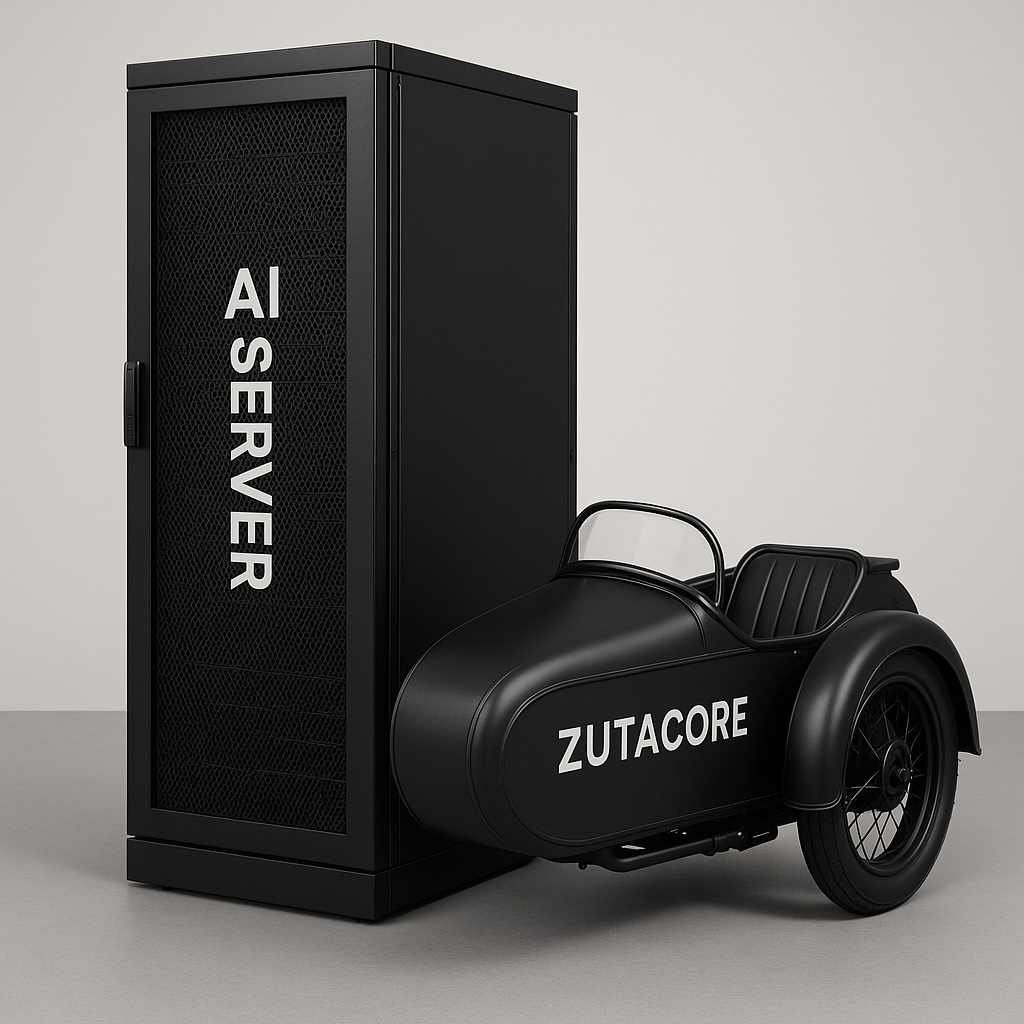ZutaCore has introduced a new two-phase liquid cooling solution designed to support high-performance AI GPUs within existing air-cooled data centers without requiring access to facility water loops. This “sidecar” system operates as a standalone liquid cooling unit that sits adjacent to standard racks, allowing operators to manage up to 240kW of heat across dense compute environments.

AI Rendering of The ZutaCore Sidecar
The solution was developed as part of ongoing work within the Open Compute Project (OCP), where ZutaCore has contributed to the evolving standards for both single-phase and two-phase cooling sidecars. Its official debut was made during the OCP APAC Summit, with a presentation focused on how this modular architecture enables more scalable and energy-efficient cooling deployment.
The sidecar approach is particularly relevant for hyperscalers running next-generation AI infrastructure, where thermal demands have begun to outstrip what traditional air systems can handle. With many facilities still relying solely on air-based cooling, there’s often no immediate pathway to implement full-scale liquid solutions. ZutaCore’s sidecar addresses this by providing a modular, waterless design that integrates alongside current infrastructure.
Capable of cooling configurations such as two 120kW racks or four 60kW racks, the system leverages a closed-loop two-phase cooling process. Heat is absorbed by a fluid that vaporizes, then condenses and recirculates, which allows for continuous operation without the need for external water supply lines. This setup gives data centers the ability to incrementally support modern workloads while preserving existing investments in rack infrastructure.
In practical terms, the sidecar’s two-phase design significantly reduces the amount of liquid that needs to be pumped through the system. Where single-phase systems typically require about 1.5 liters per minute per kilowatt, the ZutaCore unit achieves effective cooling at just 0.3 liters per minute per kilowatt. This results in an estimated 80% reduction in pumping power.
The sidecar uses a lightweight aluminum microchannel condenser instead of traditional copper radiator assemblies, with ZutaCore indicating that this will improve heat transfer by 20 to 40 percent while reducing physical bulk. Pumps and fans are both hot-swappable, and the system is configured with N+1 redundancy to ensure reliability under load. Smart controls manage fluid dynamics in real time, automatically adjusting flow, temperature, and pressure. The unit is compatible with remote monitoring systems and data center infrastructure management (DCIM) platforms, streamlining integration into modern environments.
With direct liquid cooling adoption set to more than double by 2029, modular, waterless systems like ZutaCore’s are emerging as a practical bridge between legacy infrastructure and AI-era demands.




 Amazon
Amazon